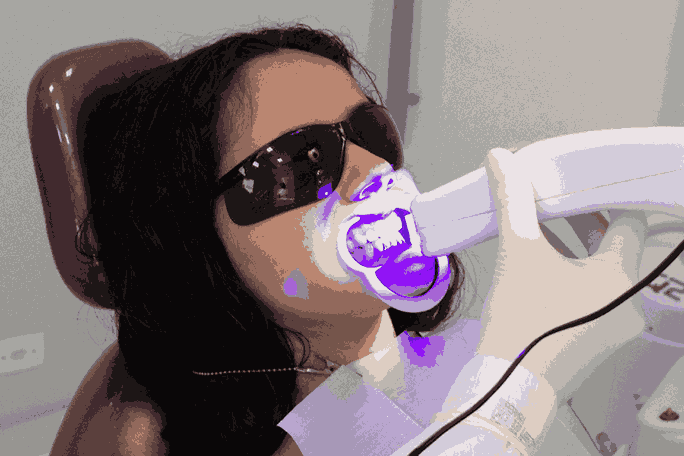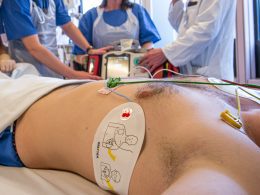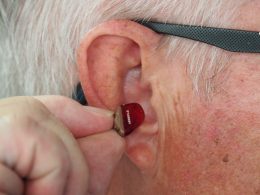In the age of social media filters, high-definition video calls, and a growing focus on self-care, teeth whitening has become a mainstream cosmetic goal. Among the many methods flooding the market, LED teeth whitening kits have emerged as a popular at-home option, promising professional-level results without the dental office price tag.
But do these kits actually work? Are they safe? And more importantly, are they worth your time and money? In this article, we’ll break down how LED teeth whitening kits function, assess their effectiveness, evaluate their safety, and explore whether they truly live up to the hype.
What Are LED Teeth Whitening Kits?
LED (light-emitting diode) teeth whitening kits are at-home systems that typically include:
-
A mouth tray with built-in LED lights
-
Whitening gel, usually containing hydrogen peroxide or carbamide peroxide
-
A timer or remote control
-
Sometimes additional tools like shade guides or desensitizing gels
These kits are designed to be used daily or several times a week over a set period, usually ranging from 7 to 14 days.
How Do They Work?
The whitening process involves two key components:
-
Whitening Gel: The gel contains active ingredients (usually peroxide-based) that break down stains through an oxidation process. This penetrates the tooth enamel to lighten internal discoloration.
-
LED Light: The blue LED light is thought to accelerate or enhance the whitening effect by speeding up the chemical reaction of the peroxide.
Although some debate exists over how much the light contributes to the whitening, most dental professionals agree that the gel does most of the work, while the light may enhance or expedite results slightly.
Benefits of At-Home LED Whitening Kits
1. Convenience
The biggest selling point of LED kits is convenience. You can whiten your teeth while watching TV, reading, or working from home. No appointments or commutes required.
2. Cost-Effective
Professional in-office whitening treatments can cost anywhere from £250 to £800. In contrast, high-quality at-home LED kits are typically priced between £25 to £100, making them more accessible for most people.
3. Gradual Results
Unlike some one-time procedures, LED kits provide gradual results over days or weeks, which can be easier on sensitive teeth and gums.
4. Safe for Most Users
When used as directed, these kits are generally safe. Many come with peroxide concentrations within safe limits, and some even offer non-peroxide alternatives for sensitive users.
Limitations and Concerns
1. Effectiveness Varies
Results depend on factors like:
-
The concentration of the whitening gel
-
Duration of use
-
The type and age of stains (e.g., intrinsic vs. extrinsic)
-
Individual tooth structure and enamel thickness
Some users may see dramatic improvements, while others experience minimal change.
2. Short-Term Sensitivity
Temporary tooth sensitivity or gum irritation is common, especially with peroxide-based gels. This usually subsides within a few hours or days but can be uncomfortable.
3. Inconsistent Product Quality
The market is flooded with knockoff or low-quality LED kits. Many lack third-party testing, ADA approval, or clear ingredient labeling. Cheap kits may deliver weak results or cause discomfort due to poor fit or harsh chemicals.
4. Limited Lifespan of Results
Whitening is not permanent. Without maintenance and proper oral hygiene, stains from coffee, wine, or smoking can return within a few months. Many users repeat treatments periodically to maintain their results.
What to Look for in a Good LED Whitening Kit
If you’re considering trying one, here are key features to look for:
-
Peroxide Strength: For effectiveness, look for a gel with 10% to 35% carbamide peroxide or up to 10% hydrogen peroxide. If you have sensitive teeth, choose a low-peroxide or peroxide-free option.
-
LED Wavelength: Most kits use blue light in the 450–500 nanometer range, which is standard for whitening. Anything significantly outside this range may be ineffective.
-
Customizable Fit: A well-fitting mouth tray helps the gel contact all tooth surfaces evenly. Some kits come with moldable trays or adjustable designs.
-
Brand Reputation: Choose products with third-party lab testing, ADA approval (if available), and positive reviews. Trusted brands include GLO Science, Snow, AuraGlow, and SmileDirectClub.
-
Customer Support: Good brands offer return policies, warranties, or live support in case you have questions or concerns.
Who Should Avoid LED Kits?
While generally safe, LED whitening kits may not be suitable for:
-
Children under 12: Their teeth and gums are still developing.
-
Pregnant or breastfeeding women: Limited research exists on the safety of peroxide during pregnancy.
-
People with dental restorations: Crowns, veneers, and fillings won’t whiten, leading to uneven color.
-
Those with gum disease or untreated cavities: Whitening can worsen sensitivity and cause irritation.
Always consult your dentist if you’re unsure whether at-home whitening is right for you.
Are They Worth It? Final Verdict
Yes—for many people, LED whitening kits are worth it. They offer a balance of affordability, convenience, and visible results for mild to moderate tooth discoloration. While not as powerful or long-lasting as professional treatments, high-quality LED kits can effectively brighten your smile if used consistently and correctly.
However, they are not a magic solution. Managing expectations is important—results vary by individual, and maintenance is key. For deeper or more stubborn stains, professional whitening may be a better investment.
If you choose the right kit, follow instructions, and maintain good oral hygiene, an LED whitening system can be a smart addition to your self-care routine.












